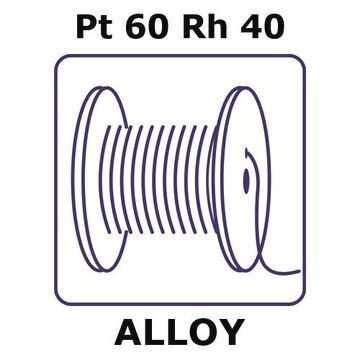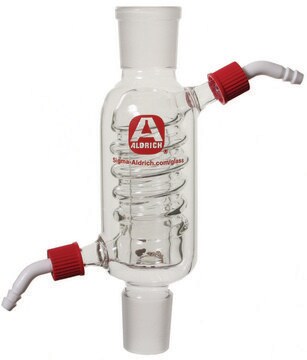GF65991415
Iron
foil, 50mm disks, thickness 0.1mm, hard, 99.5%
Sinônimo(s):
Iron, FE000320
Faça loginpara ver os preços organizacionais e de contrato
About This Item
Fórmula linear:
Fe
Número CAS:
Peso molecular:
55.85
Número MDL:
Código UNSPSC:
12141721
ID de substância PubChem:
NACRES:
NA.23
Produtos recomendados
Ensaio
99.5%
forma
foil
fabricante/nome comercial
Goodfellow 659-914-15
resistividade
9.71 μΩ-cm
tamanho × espessura
50 mm × 0.1 mm
pb
2750 °C (lit.)
pf
1535 °C (lit.)
densidade
7.86 g/mL at 25 °C (lit.)
cadeia de caracteres SMILES
[Fe]
InChI
1S/Fe
chave InChI
XEEYBQQBJWHFJM-UHFFFAOYSA-N
Categorias relacionadas
Descrição geral
For updated SDS information please visit www.goodfellow.com.
Informações legais
Product of Goodfellow
Escolha uma das versões mais recentes:
Certificados de análise (COA)
Lot/Batch Number
Lamentamos, não temos COA para este produto disponíveis online no momento.
Se precisar de ajuda, entre em contato Atendimento ao cliente
Já possui este produto?
Encontre a documentação dos produtos que você adquiriu recentemente na biblioteca de documentos.
Qiu et al.
Physical review letters, 85(7), 1492-1495 (2000-09-06)
FeF (2) films are grown by the reaction of XeF (2) and SeF (6) with iron foil. The growth initially follows the Mott-Cabrera parabolic rate law, indicating that the process is diffusion limited. At a certain film thickness, however, the
Jun-Won Jang et al.
Water science and technology : a journal of the International Association on Water Pollution Research, 59(12), 2503-2507 (2009-06-23)
Zero valent iron has been successfully used for the degradation of a wide range of contaminants. However, this reaction of using ZVI particle produces a large quantity of iron sludge. To solve the problem, we report the synthesis of self-organized
Arnold L Demain et al.
Applied microbiology and biotechnology, 73(1), 55-59 (2006-04-20)
When tetanus toxin is made by fermentation with Clostridium tetani, the traditional source of iron is an insoluble preparation called reduced iron powder. This material removes oxygen from the system by forming FeO(2) (rust). When inoculated in a newly developed
Thomas A Russo et al.
Infection and immunity, 82(6), 2356-2367 (2014-03-26)
Hypervirulent (hypermucoviscous) Klebsiella pneumoniae (hvKP) strains are an emerging variant of "classical" K. pneumoniae (cKP) that cause organ and life-threatening infection in healthy individuals. An understanding of hvKP-specific virulence mechanisms that enabled evolution from cKP is limited. Observations by our
Laura M van Staalduinen et al.
Proceedings of the National Academy of Sciences of the United States of America, 111(14), 5171-5176 (2014-04-08)
The enzymes PhnY and PhnZ comprise an oxidative catabolic pathway that enables marine bacteria to use 2-aminoethylphosphonic acid as a source of inorganic phosphate. PhnZ is notable for catalyzing the oxidative cleavage of a carbon-phosphorus bond using Fe(II) and dioxygen
Nossa equipe de cientistas tem experiência em todas as áreas de pesquisa, incluindo Life Sciences, ciência de materiais, síntese química, cromatografia, química analítica e muitas outras.
Entre em contato com a assistência técnica






